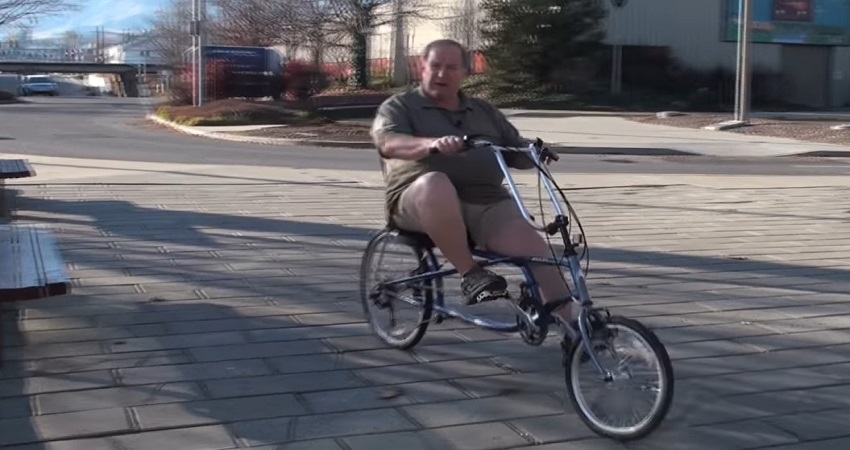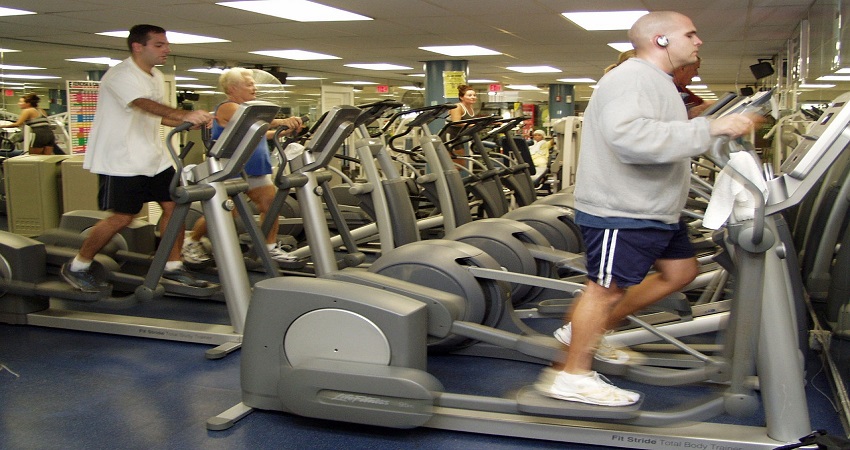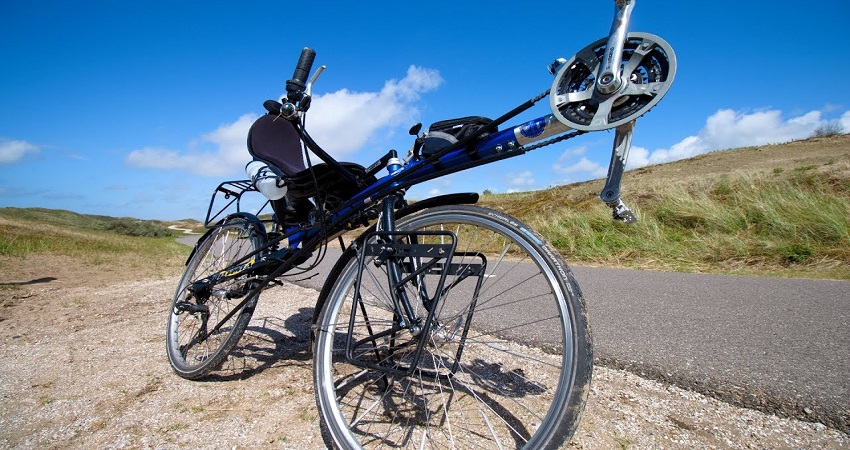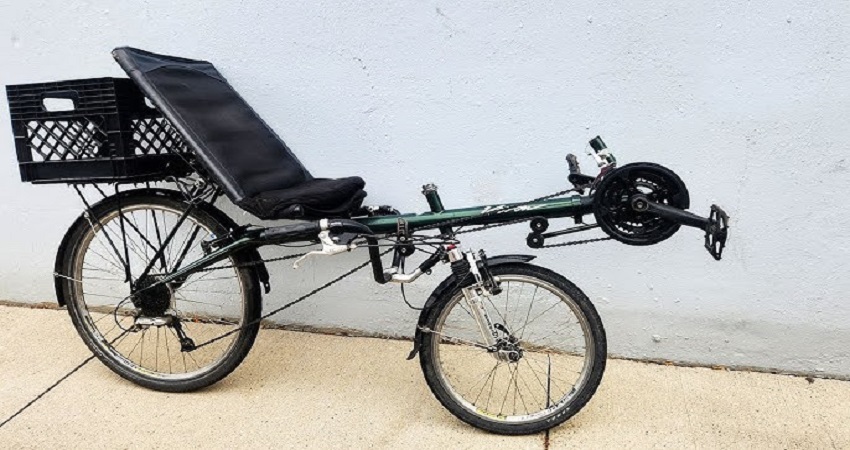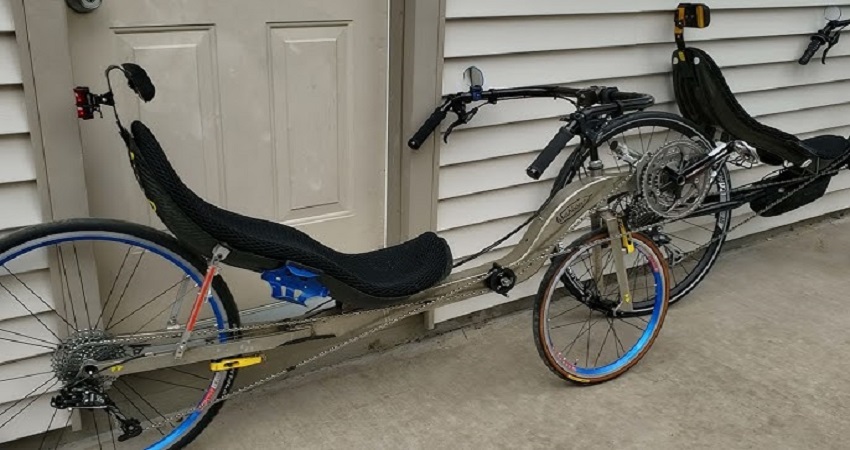
It can take varying amounts of time to ride a recumbent bike, depending on factors such as distance, terrain, and personal fitness level. However, on average, a person can typically ride a recumbent bike at a speed of 10-20 mph, covering distances of 10-20 miles in 30-60 minutes.
Recumbent biking offers a comfortable and efficient way to exercise, with the rider sitting in a reclined position, using both leg muscles and core strength. Whether it’s for leisure, commuting, or fitness purposes, riding a recumbent bike provides a low-impact cardiovascular workout that can be enjoyed by individuals of all ages and abilities.
So, hop on your recumbent bike and experience the joy of a fast and relaxing ride suitable for any skill level.
Factors Affecting Riding Time
Distance
One of the most significant factors that affect the time it takes to ride a recumbent bike is the distance you plan to cover. It goes without saying that the longer the distance, the more time it will take to complete the ride. However, the specific duration can vary depending on other factors.
Terrain
The terrain you ride on plays a vital role in determining the riding time. Riding on flat and smooth surfaces allows for faster and more efficient pedaling, resulting in quicker completion of the route. On the other hand, tackling hilly or uneven terrain will considerably slow you down.
Fitness Level
Your fitness level also impacts the amount of time it takes to ride a recumbent bike. Those with a higher level of fitness will most likely ride at a quicker pace, allowing them to cover the distance in a shorter time. On the contrary, individuals with a lower fitness level may need to take breaks or ride at a slower pace, extending the overall riding time.
Choosing The Right Recumbent Bike
When it comes to purchasing a recumbent bike, it’s crucial to choose the right one that suits your needs and preferences. With various types of recumbent bikes available on the market, understanding what each type offers and making adjustments for comfort are essential factors to consider.
Types Of Recumbent Bikes
There are three main types of recumbent bikes: the long-wheelbase, the short-wheelbase, and the compact long-wheelbase.
| Type of Recumbent Bike | Description |
|---|---|
| Long-wheelbase | This type of recumbent bike provides stability and comfort due to its longer frame. It is suitable for riders looking for a relaxed riding experience. |
| Short-wheelbase | The short-wheelbase recumbent bike offers a sportier feel and better maneuverability. It is popular among riders who prefer faster speeds and agility. |
| Compact long-wheelbase | This type combines the benefits of both the long-wheelbase and short-wheelbase recumbent bikes. It offers stability, comfort, and a smaller overall size for easier transportation and storage. |
Adjustments For Comfort
Once you’ve decided on the type of recumbent bike that suits you, it’s crucial to make necessary adjustments for optimal comfort. Consider the following adjustments:
- Seat Position: Adjust the seat position to ensure your legs are properly extended, creating a comfortable pedaling motion and minimizing strain on your knees.
- Handlebar Position: Modify the handlebar position to achieve a natural grip and relaxed riding posture. It should be within easy reach without straining your arms or shoulders.
- Backrest Angle: Set the backrest angle according to your preference, providing adequate lumbar support and promoting good spinal alignment.
- Pedal Distance: Adjust the distance between the pedals to accommodate your leg length, allowing for smooth and efficient pedaling without overextending.
- Seat Cushioning: Consider adding a cushion or padding to the seat for extra comfort during longer rides, reducing pressure points and enhancing overall enjoyment.
By choosing the right type of recumbent bike that suits your needs and making necessary adjustments for comfort, you can ensure a pleasant and enjoyable riding experience. Take the time to experiment and fine-tune your bike until you find the perfect fit!
Average Riding Time For Beginners
Beginners can expect to take some time to get the hang of riding a recumbent bike, but with consistent practice, it becomes easier. The average riding time for beginners can vary, but generally, it takes a few weeks to a couple of months to feel comfortable and confident on a recumbent bike.
Improving Riding Speed
When it comes to riding a recumbent bike, one of the goals for many cyclists is to improve their riding speed. Whether you’re a beginner or a seasoned rider, there are various strategies and techniques you can implement to increase your speed on the recumbent bike. In this blog post, we will explore two effective ways to boost your riding speed: interval training and proper cycling technique.
Interval Training
Integrating interval training sessions into your recumbent bike routine can significantly enhance your riding speed. This type of training involves alternating between intense bursts of effort and recovery periods. By pushing your limits during the high-intensity intervals, you can improve your cardiovascular endurance and overall speed. To incorporate interval training into your recumbent bike workouts, consider the following tips:
- Vary your speed: Alternate between periods of fast pedaling and slower recovery phases.
- Time your intervals: Start with shorter intervals, such as 30 seconds of intense pedaling, followed by one to two minutes of recovery. Gradually increase the duration of your high-intensity intervals as your fitness level improves.
- Track your progress: Keep a record of your intervals and monitor your performance over time. This way, you can identify improvements and adjust your training accordingly.
Proper Cycling Technique
Having the right technique while riding a recumbent bike can also contribute to your overall speed. By mastering proper cycling form, you can optimize your energy efficiency and maximize your pedaling power. Here are some key aspects of proper cycling technique:
- Posture: Maintain a relaxed yet engaged posture throughout your ride. Ensure that your back is well-supported by the recumbent bike’s seat.
- Pedaling cadence: Aim for a consistent and rhythmic pedaling cadence. Strive for a balance between high speed and sufficient resistance.
- Smooth pedal strokes: Focus on smooth and fluid pedal strokes. Avoid excessive rocking or bouncing movements, as they can waste energy.
- Utilize your muscles efficiently: Engage your core muscles while pedaling to provide stability and power. Distribute the workload evenly between your legs.
By paying attention to these aspects of proper cycling technique, you can optimize your riding speed and minimize unnecessary exertion. Remember that practice and persistence are key to mastering these techniques and improving your overall performance.
In conclusion, improving your riding speed on a recumbent bike involves a combination of rigorous interval training sessions and mastering proper cycling technique. With dedication and consistent effort, you can gradually enhance your speed and enjoy a more efficient and exhilarating ride. So, hop on your recumbent bike, implement these strategies, and conquer the road with your newfound speed!
Long-distance Riding Tips
When it comes to long-distance riding on a recumbent bike, there are a few key factors to consider to ensure a successful and enjoyable experience. Pacing yourself, maintaining proper hydration and nutrition, are crucial aspects that can make a significant difference in your ride. In this article, we’ll delve into these topics and provide you with some valuable tips to help you conquer those long miles in a comfortable and efficient manner.
Pacing Yourself
Pacing yourself is essential when it comes to long-distance riding on a recumbent bike. The key is to find a sustainable rhythm and avoid pushing too hard in the initial stages, as this can lead to burnout later on. Start at a comfortable pace, gradually increasing your speed and intensity as you warm up.
One effective technique to pace yourself is to listen to your body. Regularly check in with yourself, monitoring your breathing and heart rate. If you feel like you’re pushing too hard, slow down and give yourself a chance to recover. Remember, it’s a marathon, not a sprint.
Hydration And Nutrition
Proper hydration and nutrition are vital for maintaining energy and avoiding fatigue during long rides. It’s crucial to stay hydrated before, during, and after your ride. Bring a water bottle and be sure to drink regularly, even if you don’t feel particularly thirsty.
In addition to water, consider bringing electrolyte-rich drinks to replenish the minerals lost through sweat. These drinks help prevent cramping and improve your overall performance. Remember to also pack some snacks that are rich in carbohydrates and protein, providing a sustained source of energy throughout the ride.
Timing your nutrition intake is important as well. Aim to consume small portions of food or energy gels every 45 minutes to an hour to keep your energy levels stable. Avoid consuming large meals that may cause discomfort during your ride.
Here’s a quick summary of long-distance riding tips:
- Pace yourself to find a sustainable rhythm.
- Listen to your body and adjust your speed accordingly.
- Stay hydrated by drinking water and electrolyte-rich beverages.
- Pack snacks that are rich in carbohydrates and protein.
- Eat small portions regularly to maintain consistent energy levels.
By following these long-distance riding tips, you’ll be well-prepared to take on the challenge of riding a recumbent bike for extended periods. Remember to train, plan your routes, and prioritize safety to enhance your overall riding experience.
Frequently Asked Questions Of How Long Does It Take To Ride A Recumbent Bike?
How Long Does It Take To Ride A Recumbent Bike?
Riding a recumbent bike duration depends on factors such as the rider’s fitness level, terrain, and desired distance. On average, a beginner may take around 30 minutes to cover a 5-mile distance, while an experienced rider can complete it in 20 minutes.
Ultimately, it varies from person to person.
What Are The Benefits Of Riding A Recumbent Bike?
Riding a recumbent bike offers numerous benefits, including improved cardiovascular health, reduced strain on joints, lower back support, and enhanced comfort. The laid-back seating position also reduces strain on the neck and shoulders and provides a more ergonomic and enjoyable riding experience.
How Do You Choose The Right Recumbent Bike For Your Needs?
Choosing the right recumbent bike involves considering factors such as your fitness goals, budget, frame length, seat style, gears, and suspension. Visit local bike shops, test ride different models, and consult with experts to ensure the bike fits your body size and riding style, maximizing comfort and performance.
Conclusion
The time it takes to ride a recumbent bike varies based on several factors, including your fitness level, terrain, and personal goals. It’s important to listen to your body and start at a pace that is comfortable for you, gradually increasing intensity.
With consistent effort and dedication, you can see improvements in your riding performance over time. Remember, the journey is as important as the destination. So hop on a recumbent bike and enjoy the ride!
